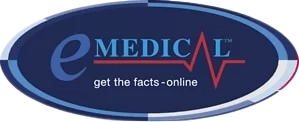Otovent Ear Nose and Throat Treatment Kit
$25.95
For the treatment of low pressure/partial vacuum in the middle ear of children aged three and upwards and adults. The Otovent method, which is established in some 20 countries, is an effective, non-surgical alternative to tube insertion. The documentation demonstrates the effectiveness of the method in both children and adults.
Two-way function
Both the passive inflation phase and the active deflation phase enable the opening of the Eustachian tube. The inflation phase is the phase in which the balloon is inflated via one nostril. The deflation phase is the phase in which the air flows out of the balloon and into the nostril.
It should be noted that, in 70% of cases, a good treatment result is obtained after the inflation phase, so always try using only the inflation phase to begin with. If the pressure in the childs ear is not equalised by the inflation phase, use both the inflation phase and the deflation phase.
Control function
Most children like blowing up balloons. The playful aspect of the Otovent method helps the child to accept the treatment. During inflation via the nose using the tested medical balloon, therapeutic pressure is created. In other words, it is easy for parents to check whether the child has performed the treatment correctly.
Self-treatment
Older children who have learned to use the method are able to both perform and check the Otovent treatment themselves. Negative effects have not been demonstrated in clinical studies, nor reported from any of the 20 countries in which children and adults are currently being treated with the Otovent method. Used in the right way, the Otovent method offers effective help to children with secretory otitis media/otitis media with effusion (SOM/OME). Fifty per cent of children aged three and upwards experience a normalisation or a lower partial vacuum in their middle ear.
Directions
The Otovent method, which is established in some 20 countries, is an effective, non-surgical alternative to tube insertion. The documentation demonstrates the effectiveness of the method in both children and adults.
Step 1 Connect the balloon to the nose piece. Hold the round part of the nose piece firmly against the right nostril with the right hand. Press the left nostril closed with the left hand.
Step 2 Inhale deeply, close the mouth and the inflate the balloon until it is the size of a grapefruit,by blowing through the nostril.
Step 3 Repeat the procedure with the left nostril.
If you/the child experience no change:
Step 1 Repeat step 2 Then bend your head forwards slightly and turn your head to the right. Now repeat step 3.
Step 6 When the balloon is inflated, try to swallow. Please note that the nasal applicator should still be held close to your right nostril, your left nostril should be pressed shut with your left index finger and your mouth should be kept shut.
Step 7 Repeat the same procedure in the left nostril with your head tilted to the left.
FAQ
How many times a day should the balloon be inflated?
At least twice a day, morning and evening, and preferably also once in the middle of the day if this is practically feasible.
How long should the treatment be continued?
According to the documentation, the treatment should continue morning and evening for three to four weeks or according to your doctors recommendation.
How should the balloons be cleaned?
The balloons should not be cleaned. They should be replaced after three to four days use (max. 20 inflations/balloon).
How should the nasal applicator be cleaned?
If necessary, use a mild cleaning agent and ordinary water.
How should the balloons be stored?
They should be kept in the original packaging at room temperature and protected from the light.
How long can balloons be kept?
See packaging for expiry date.
Why is it sometimes difficult to inflate the balloon?
One probable reason is that the nasal applicator is aimed at the central dividing wall of the nose (septum) or that the patient has forgotten to block the other nostril and/or close his/her mouth.
Can I use toy balloons with the nasal applicator?
No, according to the current documentation, toy balloons have no effect.
Why is my three-year-old child unable to inflate the balloon?
Even if some clinical studies have included children from the age of three and upwards, it may be difficult for such small children to inflate a balloon. It is, however, worth having a try. If the child is unable to do it, a parent can inflate the balloon and put it against one of the childs nostrils. Allow the air to enter the childs nostril and, at the same time, get the child to swallow. This method may work on children aged three and upwards.
Flying indications for Otovent
At which point during a flight should I inflate the balloon?
The balloon should be inflated when the pilot begins his descent before landing. This is when the partial vacuum in the middle ear may be created.
How often should the balloon be inflated?
You should inflate the balloon the moment the pain begins or when your hearing deteriorates. In normal circumstances, it may need to be inflated several times. There is no upper limit to the number of inflations.
Should I also use nose drops?
Nose drops have no real effect when it comes to opening the Eustachian tube. They may, however, be effective if you have a cold and want to clear your nose, thereby making it easier to perform the Otovent method.
Contains ipratropium 44mcg per spray (0.06% w/v)


